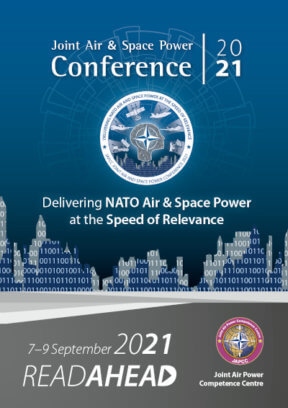Introduction
Classical developments of military technology and equipment follow a generational approach. For example, if a nation wants to develop a constellation of Intelligence, Surveillance and Reconnaissance (ISR) satellites which consists of 5 satellites, they usually develop the whole constellation, launch the satellites in a relatively short timeframe and operate it for a calculated lifespan (usually between seven to fifteen years). After a certain timeframe, based on the calculated lifespan and the experience gained during the operational phase, the follow-on system gets projected and the process starts again.
Evolving technology as well as decreasing launch costs should encourage nations to follow a different approach. Referred to in this paper as the ‘continuous constellation approach’ and using the example of the five satellite constellation as stated above, the constellation will not be built up as a generation package and launched simultaneously, but will incorporate evolving technology into the development of each individual satellite in turn. This allows for periodic replacement of the oldest satellite on orbit with the most current technology available, in a continuous rotation. Due to the significantly reduced launch costs, which have been a limiting factor in the past, the calculated lifespan of each satellite could be reduced, allowing for more frequent launch of smaller satellites with lower technical redundancy rates while still ensuring safe continuous operations. The continuous regeneration with up to date technology provides a large advantage over the long term. This article discusses one specific idea to keep an ISR constellation functioning at ‘the speed of relevance’.
Examples in the Development of Recent Military ISR Constellations
Traditional projected development, launch, and use cycles of ISR constellations usually follow approaches similar to these examples:
The German SARLupe military ISR satellite constellation was initiated in 1998. The specifications1 were formulated in 2000 and industry partners were awarded contracts in December 2001. 2006 saw the first launch, with the full constellation of five satellites completed in 2008.2 Designed with a ten-year lifespan, the constellation is still operational while the follow-on system, SARah (whose conceptual work led to an industry contract in 2013), is already delayed from 2019 to late 2021.
The conceptual development of the Italian COSMO SkyMed dual-use constellation started in 1998,3 involving the Italian Ministry of Defense in 2001. The first satellite was launched in 2007 with a designed lifespan of 5.25 years. The constellation of four was finished in 2010 and all satellites are still operational. The development of the follow-on generation start-
ed in 2011 with a contract awarded to industry partners in 2015. The first satellite was launched in 2019.
When compared to the German SARLupe, the gap between the designed end of life of the first generation and the launch of the follow-on system of the COSMO SkyMed constellation could have been even more significant. Both constellations can be seen as blueprints for the long timelines between idea, acceptance, design, build, and launch of an ISR satellite constellation in western governmental processes.4
Risking a New Paradigm: Small and Inexpensive Satellite Solutions, Based on Commercial Off the Shelf Technology
Maintaining technical developments at the speed of relevance with Space systems is an important, but extremely difficult enterprise. Even when developments of military technology which results in the fielding of systems to the armed forces follow a slower path than the integration of technical developments in the civilian world, Space systems are unique in this aspect, too. While equipment used in the Land, Air, Maritime and Cyberspace domains can be upgraded with software and hardware components, Space-based systems have only a limited option to receive and incorporate software upgrades. Limited in this context means that there is no chance to upgrade or even repair the electronic components once launched. Therefore, redundant elements that allow a longer lifespan in Space have to be integrated. These electronic components, when certified and designed for long term usage in Space, usually offer lower performance than equipment designed to be used on the Earth.
In most western countries, satellite constellations operated in generations as described earlier, are the norm. Due to these long term processes and high launch costs, the aim in the past was to design a constellation with a projected lifespan as long as possible. A longer projected lifespan requires an increased redundancy rate for components, specifically for the use in Space certified electronic components, as well as a larger amount of fuel to sustain the orbit over a longer timeframe. These stringent requirements lead to higher costs due to specifically designed components that possess a higher survivability rate in Space which further leads to higher launch costs due to increased satellite weight. Finally, if you consider a one to three-year production process, the ‘age’ of the technology at the end of the designed lifetime of a satellite, which has been on-orbit for seven to fifteen years, is then between eight and eighteen years. In the author’s opinion, this is not in keeping with the ‘speed of relevance’ from a technical perspective.
Discussing a New Paradigm
The question then is how government procured ISR satellite constellations can keep pace with evolving technological developments? In endeavouring to answer that question, this paper will discuss an approach referred to as ‘the continuous constellation approach.’ This means changing the focus from longer lifespans and pre-defined constellations to a more flexible approach. Risking shorter lifespans of individual satellites offers decreased launch weight due to reduced redundancies and thus lower fuel needed for orbit sustainment.
Technological Considerations
The ‘lower redundancy’ approach involves using commercial off the shelf technology to produce small and modular satellites that will be operated via a standardized process. The payloads can be adjusted prior to the launch to react to security and intelligence needs. To maintain the speed of relevance, each modular satellite will be technically up-to-date, based on available technology, prior to being launched. This is especially applicable for hardware related to data storage, data transmission and on-board computing.
For the overall design of a continuous constellation, the change in the mindset is to focus on capabilities, not on assets. Transitioning from a pre-planned to a modularity plug and play satellite design, offers a maximum of flexibility.5 This can integrate modular payloads that can be technically upgraded or converted prior to launch, such as switching the payload from an electromagnetic sensor to an electro-optical one or vice versa. There are already examples of this approach in commercial satellites that are built utilizing off-the-shelf technology components, which are offered at very low prices.6
Actual technical options allow an electro-optical ground resolution of one meter that can be achieved by unpropelled satellites with a launch mass of less than 50 kg.7 Satellites in that resolution regime with propulsion systems have a launch mass of roughly 120 kg.8 Unpropelled ISR satellites equipped with a submeter SAR payload can be built with a launch mass of roughly 100 kg each.9 A propelled system with a comparable payload has a launch mass of roughly 150 kg each.10 Unpropelled satellites, equipped with a Signal Intelligence (SIGINT) payload, are available with a launch mass of less than 70 kg.11 Satellites with these specifications are already successfully used on orbit and are, in the author’s opinion based on their performance, usable for military purposes. The designed and achieved lifetimes vary between two and four years for unpropelled and between three and six years for propelled satellites.
Launch Schedule Approaches and Orbit Selection
An initial disadvantage of this approach is the longer timeframe between the initial launch and the full operational capability of a constellation, since the satellites are launched at larger intervals compared to the classical approach where satellites were built in parallel and then launched en masse in a shorter timeframe. However, once the buildup of the initial constellation is complete for this continuously launched approach, likely with one to three launches per year based on the constellation’s design and security requirements, the subsequent steady-state replenishment schedule (one to two launches per year for a constellation of four satellites, for example) will offer much greater flexibility. This approach is able to launch the needed payload in the regular launch cadence that is projected and will have the chance to launch responsively additional assets if needed.
Launcher and Launch Opportunities
The current developments on the launcher market offer opportunities to be more flexible. Inside the NATO alliance there are several developments of small launchers on-going that have the chance to be used for national launches of smaller satellites. For example, the use of an Electron launcher, provided by the US-NZL company Rocket Lab© which can carry 300 kg into Low Earth Orbit (LEO) costs between $5 and $7 Million.12
A standard Falcon 9 launcher provided by the US company SpaceX© costs $62 Million, but is able to carry up to 22 tons into LEO.13 This should offer affordable ride-share solutions, which means using available launch mass for secondary payloads that are not used by the primary payload. The disadvantage is that the launch is optimized for the prime customer and the secondary payloads have to arrange themselves around those requirements.
Using these two opportunities gives nations options to launch systems cost-effectively, mainly on a ride-share basis. This is particularly true if there is no threat or security requirement impeding the action, and via small individual launches to react quickly or to close gaps in constellation coverage as needed.
These two launchers are examples for affordable launch services that have challenged the previous providers and nearly squeezed some of them out of the market. Worldwide there are more than ten other launchers capable of launching between 300 kg and 1.5 tons currently under development and will have their maiden launches within the next few years.
Overall Assessment and Chances
Smaller satellites with a shorter designed lifespan reduce the production costs tremendously. This cost reduction compensates for the higher amount of launch costs due to a higher launch rate. Continuously upgrading the systems prior to launch, based on recent technical developments, will increase the individual satellite’s performance over time. This also allows the operating nation to have a continuously upgraded constellation which can react to changing payload requirements with modular designs and to enhance regional focus with specific orbits to gain better coverage on an area of interest when necessary while only slightly reducing coverage on other areas of the world.
Postscript
From the author’s perspective, the definition of a system like this which could have an operational and usable time that is unlimited when supported by continuously upgraded replenishment on orbit, may become critical in government internal fiscal planning for systems acquisitions. A financial forecast and planning for decades can limit the courageous approach as discussed here. However, even these requirements can be modified over time and could be viewed as slower than the processes described for the lifecycles of the classical constellation as stated above.












